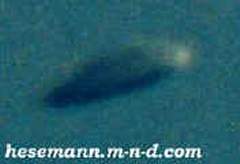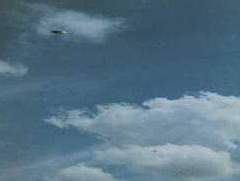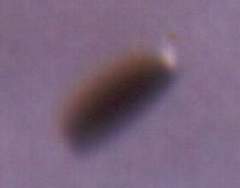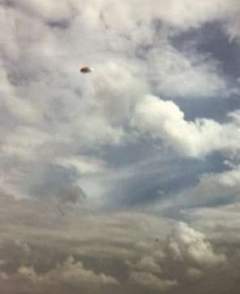
|
During his vacations in Styria, the Munich musician Rudi Nagora and his wife Hildegard explored the area around St. Lorenzen on May 23, 1971. Looking for a nice landscape, they were driving around with their car to park it somewhere and go for a walk. About noon Nagora stopped at the edge of a field, in a parking bay, left the car to inspect the area, when his wife waited inside the car. In this moment his attention was drawn by a whizzling sound coming from the sky above. He looked up and saw a shining, silver disc, moving in front of the clouds in a kind of zig-zag pattern.

|
Mr Nagora was able to take several photographs of the object who made a low humming sound before it flew away. While the disk remained stationnary, it seemed to rotate slowly. Nagora took 12 photographs (exposure time 1/50 second) with his simple Agfa-Kick-I-Box, until the film was empty. Between the photographs he let long pauses elapse. The observation time must have taken at least 10 minutes. His wife, who was in the car, could nevertheless also see the disk. No further witnesses such as farmers and road workers could be found, and the exact place could not be retrieved later, which prompted skeptics to reject the pictures.

|
The head of the UFO-skeptic group GWUP, Rudolf Henke in 1996, and the skeptic Klaus Webner in 1982 argued that the photos were falsifications because the object looks like a wheel cover thrown into air, but they did not ask to see the negatives and did not interview the witnesses.

|
These investigators who spoke with the witnesses personally and also could examine the negatives consider the case genuine and consider that the photos are not hoxed: Hubert Malthaner, Adolf Geigenthaler (1976), Professor Dr. Kaesbauer, Adolf Schneider, Rolf Dieter Klein (1995), Illobrand Von Ludwiger (1997). Since Mr Nagora's negatives are available, further investigations can be accomplished by professional picture analysts. Mr. and Mrs Nagora wrote a signed statement that they really saw a large disk and not a small model.